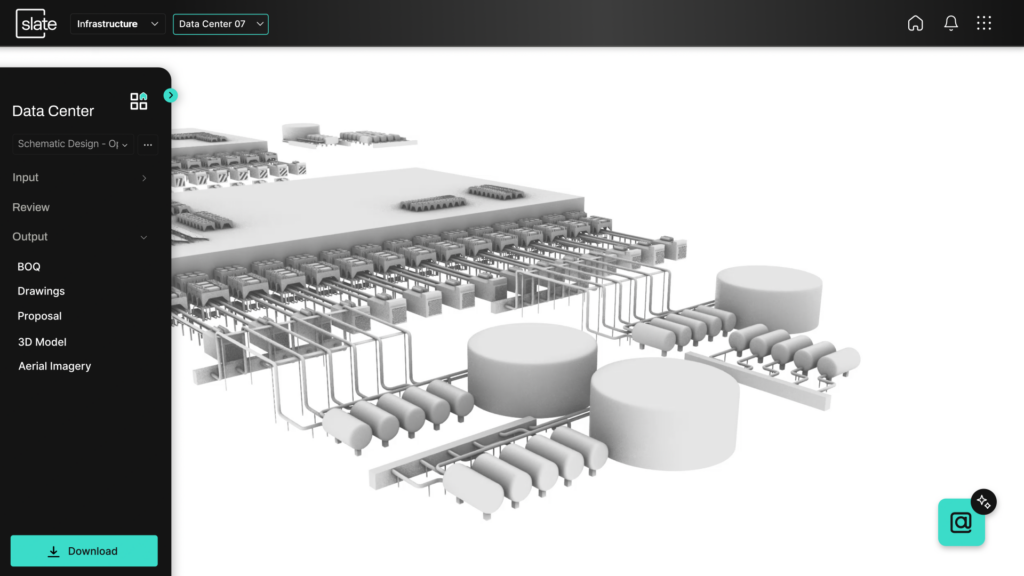A Growing Labor Crisis
The U.S. construction industry faces a monumental labor challenge, with nearly 25% of its workforce over 55 and 1.9 million workers expected to exit the field this year. The Associated Builders and Contractors Association estimates that 500,000 new recruits are needed annually just to meet current demand. Adding to the pressure, infrastructure-focused initiatives like the Bipartisan Infrastructure Law could widen the labor gap by an additional 345,000 jobs by 2026.
This crisis, coupled with a 40% decline in construction productivity since 2020, highlights the urgent need for transformative solutions. Recruitment and training alone won’t suffice—industry-wide process innovation, digitization, and automation are essential.
Why AI is the Answer
While construction has embraced various technologies, productivity gains have been minimal due to siloed data and outdated processes. Artificial intelligence (AI) offers a path forward, acting as a transformative agent by:
- Streamlining processes: AI collects and analyzes vast datasets to identify inefficiencies, automate repetitive tasks, and improve planning.
- Reducing rework: Rework accounts for 30% of construction labor. AI-driven tools can enhance data accuracy, improve communication, and predict potential project conflicts before they escalate.
- Enhancing schedules: AI can actively manage and optimize schedules in real-time, ensuring they adapt to changes and provide actionable insights for future projects.
A Workforce Fit for the Future
The arrival of Gen Z, dubbed the “toolbelt generation,” brings a digitally native workforce to construction. Their comfort with technology, including AI tools, can drive adoption and innovation. However, the key lies in deploying AI across all phases of construction and ensuring its acceptance across the value chain—from executives to field workers.
Practical Applications of AI
At Slate Technologies, AI is already addressing the construction labor gap challenges by:
- AI-enhanced design: Identifying and resolving issues early reduces errors and accelerates project timelines.
- Automated project controls: Managing vast amounts of data to improve quality tracking, reporting, and safety.
- Predictive insights: Capturing lessons learned to inform better planning, resource allocation, and project management.
AI Won’t Replace Workers
AI’s role is to augment human expertise, not replace it. By leveraging AI, construction professionals can reduce inefficiencies, eliminate rework, and deliver better projects faster. As Trevor Schick asserts, the industry’s future depends on blending human experience with AI-driven capabilities to remain competitive and meet growing demands.
“AI won’t replace humans, but humans with AI will replace those without.”
Karim R. Lakhani, Harvard Business School
Based on the original article by Trevor Schick, CEO, Slate Technologies. Read the full article at BuiltWorlds.
Curious about how Slate plans to help with the Construction Labor Gap? Check out our innovative solution Generate! Generative design for highly repeatable process and projects.

Sources:
- 1. ABC: 2024 Construction Workforce Shortage Tops Half a Million. ABC. January 31, 2024.
- 2. Will a Labor Crunch Derail Plans to Upgrade US Infrastructure? McKinsey & Company. October 17, 2022.
- 3. The Strange and Awful Path of Productivity in the US Construction Sector. The University of Chicago Becker Friedman Institute for economics. Austan Goolsbee, Chad Syverson. January 31, 2023.
- 4. Gen Z is Becoming the Toolbelt Generation. WSJ. Te-Ping Chen. April 1, 2024.
- 5. Decoding the Digital Transformation in Construction. McKinsey & Company. Jan Koeleman. August 20, 2019.

